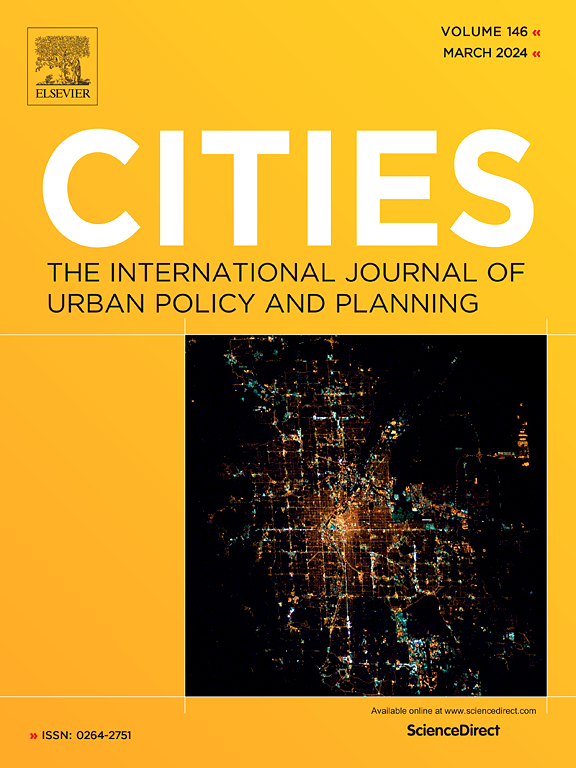Mosaic governance for urban verge greening: Engaging property owners and addressing socio-spatial inequities
IF 6
1区 经济学
Q1 URBAN STUDIES
引用次数: 0
Abstract
Urban street vegetation is a vital component of a city's greening infrastructure, offering significant environmental, social, and health benefits. However, achieving its full potential requires active engagement from households, particularly in the context of road verge greening, where responsibilities often fall at the intersection of public and private ownership. This study explores the potential of a mosaic governance model for urban verge greening, emphasising its potential to reconcile socio-spatial diversity and foster equitable participation. Drawing on a mixed-methods survey of property owners in Wellington, Aotearoa New Zealand, the research examines the motivations, barriers, and socio-spatial factors influencing residents' participation in verge greening. The findings highlight that while mosaic governance holds promise for encouraging collaboration and addressing urban greening complexities, it must account for the diverse socio-spatial characteristics, motivations, and challenges of residents. Communication, resource provision, and public education are essential to overcoming barriers such as limited knowledge and access to resources. The study makes conceptual and empirical contributions by extending the mosaic governance model to incorporate socio-spatial characteristics of place and stakeholders, stressing the importance of equitable participation in urban greening.
城市边缘绿化的马赛克治理:业主参与和解决社会空间不平等
城市街道植被是城市绿化基础设施的重要组成部分,具有显著的环境、社会和健康效益。然而,充分发挥其潜力需要家庭的积极参与,特别是在道路边缘绿化的背景下,责任往往落在公私所有权的交汇处。本研究探讨了城市边缘绿化马赛克治理模式的潜力,强调了其调和社会空间多样性和促进公平参与的潜力。通过对新西兰惠灵顿的业主进行混合方法调查,研究了影响居民参与边缘绿化的动机、障碍和社会空间因素。研究结果强调,虽然马赛克治理有望鼓励合作并解决城市绿化的复杂性,但它必须考虑到居民的不同社会空间特征、动机和挑战。沟通、资源提供和公共教育对于克服知识和资源获取有限等障碍至关重要。本研究通过扩展马赛克治理模型,将地方和利益相关者的社会空间特征纳入其中,强调了公平参与城市绿化的重要性,从而在概念和实证方面做出了贡献。
本文章由计算机程序翻译,如有差异,请以英文原文为准。
求助全文
约1分钟内获得全文
求助全文
来源期刊

Cities
URBAN STUDIES-
CiteScore
11.20
自引率
9.00%
发文量
517
期刊介绍:
Cities offers a comprehensive range of articles on all aspects of urban policy. It provides an international and interdisciplinary platform for the exchange of ideas and information between urban planners and policy makers from national and local government, non-government organizations, academia and consultancy. The primary aims of the journal are to analyse and assess past and present urban development and management as a reflection of effective, ineffective and non-existent planning policies; and the promotion of the implementation of appropriate urban policies in both the developed and the developing world.
 求助内容:
求助内容: 应助结果提醒方式:
应助结果提醒方式:


